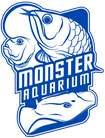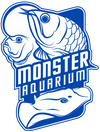Short Body Redtail catfish RTC
The Redtail Catfish, scientifically known as Phractocephalus hemioliopterus, is a large and impressive freshwater fish species that originates from the Amazon and Orinoco River basins in South America. As the name suggests, its most prominent feature is its distinctive red tail, which stands out against its dark-colored body.
Redtail Catfish are known for their immense size. They can grow up to 1.5 meters (5 feet) in length and weigh over 50 kilograms (110 pounds), making them one of the largest catfish species in the world. Due to their size, they require a very large aquarium or pond to accommodate their needs.
In terms of appearance, Redtail Catfish have a long and slender body with a broad head and a mouth lined with sharp teeth. Their body coloration can vary from dark gray to black, with some individuals displaying mottled patterns or spots. Their red tail, which gives them their common name, is a striking feature that adds to their overall beauty.
As for their behavior, Redtail Catfish are primarily nocturnal and tend to be solitary in nature. They are predominantly bottom-dwellers and spend much of their time exploring the substrate in search of food. They have a voracious appetite and are considered opportunistic predators, feeding on a variety of prey including fish, crustaceans, and even smaller mammals.
When it comes to tank requirements, housing a Redtail Catfish can be quite challenging due to their large size and specific needs. A tank or pond with a capacity of several thousand liters or more is necessary to accommodate their growth. Adequate filtration and regular water changes are crucial to maintain good water quality.
In terms of water parameters, Redtail Catfish prefer slightly acidic to neutral water conditions. The temperature should be kept between 24-28°C (75-82°F), and the pH level should be around 6.5-7.5. Providing hiding spots such as caves, large rocks, and driftwood is essential to create a secure environment for the fish.
Feeding Redtail Catfish requires a varied diet that replicates their natural feeding habits. They are carnivorous and should be offered a combination of meaty foods such as live or frozen fish, shrimp, worms, and other suitable prey items. It's important to avoid overfeeding and provide a balanced diet to maintain their health.
Due to their large size and specific care requirements, Redtail Catfish are not suitable for all aquarium or pond enthusiasts. They are often considered more suitable for experienced aquarists or those with access to large, specialized facilities.
In summary, the Redtail Catfish is an impressive and visually striking species known for its large size and distinct red tail. They require a spacious environment, appropriate tank or pond setup, and a suitable diet to thrive in captivity. If properly cared for, Redtail Catfish can be a fascinating addition to large-scale aquariums or ponds, showcasing their unique characteristics and commanding presence.
| Size |
5-6" |
|---|



